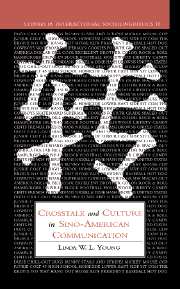3 - Missing links
Published online by Cambridge University Press: 19 August 2009
Summary
Starting with this chapter, we intensify our focus on one critical part of the puzzle making up perceptions of Chinese inscrutability. In the last chapter, we discussed the different sense of causality underlying the modern Chinese because … so … construction. We saw that, insofar as discourse is concerned, a consideration of the full range of contingent factors obscures the clarity possible for Americans who apply a linear sense of causality.
Yet another area of confusion arises from the way English-speaking Chinese use “because/as” and “so/therefore” to signal the transition between phases or stages of argument. Specifically, I refer to the choice of “because/as” to mark the introduction of their case and “so/therefore” to indicate a shift to the main point. Again and again, one finds this pattern in the examples of discourse I have examined in chapter 2. As noted there, the consistency is even more striking in view of the fact that they were gathered from a variety of formal speech situations such as business meetings, oral histories, and public conferences, and where the Chinese speakers come from different Chinese dialect backgrounds, namely, Mandarin and Cantonese.
In this chapter, I will suggest that the confusion can be clarified if we take into account some fundamental typological differences between Chinese and English. I will further suggest that the selection of “because/as” and “so/therefore” is deliberate and not accidental.
- Type
- Chapter
- Information
- Crosstalk and Culture in Sino-American Communication , pp. 66 - 87Publisher: Cambridge University PressPrint publication year: 1994

